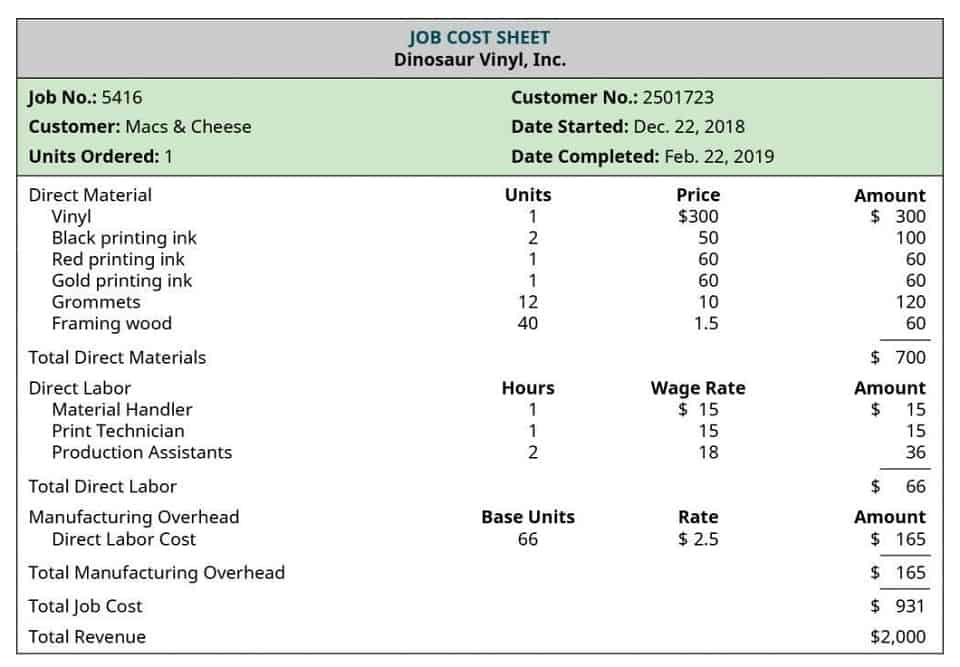Content

As stated earlier, companies may pay out either cash or stock dividends. Cash dividends result in an outflow of cash and are paid on a per-share basis. Retained earnings are accumulated and tracked over the life of a company. The first figure in the retained earnings calculation is the retained earnings statement of retained earnings example from the previous year. Retained earnings represent the portion of net profit on a company’s income statement that is not paid out as dividends. These retained earnings are often reinvested in the company, such as through research and development, equipment replacement, or debt reduction.
- Retained earnings refer to the residual net income or profit after tax which is not distributed as dividends to the shareholders but is reinvested in the business.
- This statement of retained earnings can appear as a separate statement or as inclusion on either a balance sheet or an income statement.
- A copy of this statement is published in the annual report to the shareholders, which makes it accessible to the general public and stockholders.
- There is also money that investors paid for their stake in the first place.
- This is the amount of retained earnings that is posted to the retained earnings account on the 2020 balance sheet.
- Some of the information that external stakeholders are interested in is the net income that is distributed as dividends to investors.
- As a key indicator of a company’s financial performance over time, retained earnings are important to investors in gauging a company’s financial health.
Keep in mind, other fees such as trading (non-commission) fees, Gold subscription fees, wire transfer fees, and paper statement fees may apply to your brokerage account. Corporate social responsibility is the idea that companies should aim to have a positive rather than a negative impact on society, whether environmentally, economically, or socially. Commercial paper is an unsecured short-term debt instrument that financial institutions and other companies may use to raise capital. If your business recorded a net profit of, say, $50,000 for 2021, add it to your beginning retained earnings. We believe everyone should be able to make financial decisions with confidence. To prepare the requested financial statements for The Gram Company for the month of M…
Create a free account to unlock this Template
These adjustments could be caused by improper accounting methods used, poor estimates, or even fraud. In other words, assume a company makes money (has net income) for the year and only distributes half of the profits to its shareholders as a distribution. The other half of the profits are considered retained earnings because this is the amount of earnings the company kept or retained. For example, let’s create a statement of retained earnings for John’s Bicycle Shop. John’s year-end retained earnings balance for 2018 was $67,000, and his total net income for 2019 totaled $44,000. If you have investors to whom you pay dividends, you would subtract the amount of dividends paid in this step.
Shareholder equity represents the amount left over for shareholders if a company paid off all of its liabilities. To see how retained earnings impact shareholders’ equity, let’s look at an example. As stated earlier, retained earnings at the beginning of the period are actually the previous year’s retained earnings. This can be found in the balance of the previous year, under the shareholder’s equity section on the liability side. Since in our example, December 2019 is the current year for which retained earnings need to be calculated, December 2018 would be the previous year. Thus, retained earnings balance as of December 31, 2018, would be the beginning period retained earnings for the year 2019.
Retained Earnings Statement Definition
Sood says many business owners pride themselves on their profitability or sales growth, but still have poor or negative retained earnings because they have withdrawn significant profits as dividends. Doing so can hinder the company’s ability to obtain financing or outside investment. Thus, at 100,000 shares, the market value per share was $20 ($2Million/100,000). However, after the stock dividend, the market value per share reduces to $18.18 ($2Million/110,000). Thus, stock dividends lead to the transfer of the amount from the retained earnings account to the common stock account.
- The truth is, retained earnings numbers vary from business to business—there’s no one-size-fits-all number you can aim for.
- For established companies, issues with retained earnings should send up a major red flag for any analysts.
- You can expand on the information listed in your statement of retained earnings if you want, such as par value of the stock, paid-in capital, and total shareholders’ equity.
- Net income that is not included in accumulated retained earnings has been paid out to shareholders as dividends.
- But this tends to overstate the company’s net income and retained earnings.
You can either distribute surplus income as dividends or reinvest the same as retained earnings. Any investors—if the new company has them—will likely expect the company to spend years focusing the bulk of its efforts on growing and expanding. There’s less pressure to provide dividend income to investors because they know the business is still getting established. If a young company like this can afford to distribute dividends, investors will be pleasantly surprised. These adjustments could correct errors or rectify incorrect estimates that were used in the preceding accounting period. Indirectly, therefore, retained earnings are affected by anything that affects the company’s net income, from operational efficiencies to new competitors in the market.
Step 2: Add net income or net loss
Certain complex options strategies carry additional risk, including the potential for losses that may exceed the original investment amount. Your beginning retained earnings are the retained earnings on the balance sheet at the end of 2020 ($200,000, for example). Companies typically calculate the change in retained earnings over one year, but you could also calculate a statement of retained earnings for a month or a quarter if you want.
Here’s how to prepare a statement of retained earnings for your business. During the growth phase of the business, the management may be seeking new strategic partnerships that will increase the company’s dominance and control in the market. Examples of these items include sales revenue, cost of goods sold, depreciation, and other operating expenses. Non-cash items such as write-downs or impairments and stock-based compensation also affect the account. Check out our FREE guide, Use Financial Statements to Assess the Health of Your Business, to learn more about the different types of financial statements for your business.
Statement of retained earnings: What it is and example
Such a balance can be both positive or negative, depending on the net profit or losses made by the company over the years and the amount of dividend paid. The beginning period retained earnings is nothing but the previous year’s retained earnings, as appearing in the previous year’s balance sheet. Consider a company with a beginning retained earnings balance of $100,000. During the accounting https://www.bookstime.com/blog/accounts-receivable-outsourcing period, the company generates a net income of $50,000 and pays cash dividends of $20,000, leaving it with $30,000 of its net income remaining. That amount is added to the original $100,000 for a new total retained earnings of $130,000. A statement of retained earnings is a financial statement that shows the changes in a company’s retained earnings balance over a specific accounting period.

When financial statements are developed strictly for internal use, this statement is usually not included, on the grounds that it is not needed from an operational perspective. In fact, both management and the investors would want to retain earnings if they are aware that the company has profitable investment opportunities. And, retaining profits would result in higher returns as compared to dividend payouts. Likewise, the traders also are keen on receiving dividend payments as they look for short-term gains. In addition to this, many administering authorities treat dividend income as tax-free, hence many investors prefer dividends over capital/stock gains as such gains are taxable. If the company has been operating for a handful of years, an accumulated deficit could signal a need for financial assistance.
Why You Need a Statement of Retained Earnings
Any such stock buy-backs might show up as a negative number on the balance sheet in an account called treasury stock. Retained earnings can be less than zero during an accounting period — If dividend payments are greater than profits, or profits are negative. Retained earnings during a month, quarter, or year is the revenue the company collected beyond its expenses, which it did not distribute to owners. It is possible for a company not to raise enough revenues to cover its costs.
It is the opposite of the payout ratio, which measures the percentage of profit paid out to shareholders as dividends. Your beginning retained earnings are the funds you have from the previous accounting period. Net income (or loss) is the amount of your business’s revenue minus expenses. Dividends paid is the amount you spend on your company’s shareholders or owners, if applicable. The statement of retained earnings is a financial statement that is prepared to reconcile the beginning and ending retained earnings balances. Retained earnings are the profits or net income that a company chooses to keep rather than distribute it to the shareholders.
In the latter case, the investors hope to enjoy the benefits of the share prices going up. It also shows the share of the net income that is being paid as dividends to the stockholders by the firm. After adding the current period net profit to or subtracting net loss from the beginning period retained earnings, subtract cash and stock dividends paid by the company during the year. In this case, Company A paid out dividends worth $10,000, so we’ll subtract this amount from the total of Beginning Period Retained Earnings and Net Profit.
